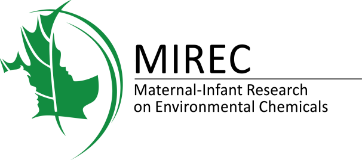
Correction and comparability of phthalate metabolite measurements of Canadian biomonitoring studies (2007-2012).
Langlois É, Saravanabhavan G, Arbuckle TE, Giroux S. Environment International. 2014 Mar;64:129-33. doi:10.1016/j.envint.2013.12.002
Phthalates are a group of chemicals commonly used in a variety of industrial, consumer, and personal-care products (e.g., perfumes, shampoos, nail polish, eye makeup). They are often called plasticizers due to their ability to make plastics soft and thus harder to break. These chemicals have a widespread presence in the environment, and their metabolites are often measured in biomonitoring studies to assess phthalate exposure. (Metabolites are substances produced during metabolism, or bodily chemical processes, and may also refer to products that remain after a substance is broken down, or metabolized, by the body).
Previous research by the Institut national de santé publique du Québec (INSPQ) laboratory identified an issue with the accuracy of several commercial phthalate metabolite standards that were used to analyze phthalate metabolites in biospecimens collected in national biomonitoring studies. This laboratory was responsible for analyzing urine samples for three such studies:
- the Canadian Health Measures Survey (CHMS), an ongoing health measures survey begun in 2007 (blood and urine samples)
- the MIREC Study involving 2,001 pregnant women from 10 Canadian cities; and
- the Plastics and Personal-Care Product Use in Pregnancy (P4) Study, consisting of 80 pregnant women who were followed through pregnancy and after the birth of their babies.
Inaccuracies in the commercial standards affected the validity of the results from these three biomonitoring studies, involving a total of 9,302 samples and 105,000 phthalate metabolite measurements. In this work, an approach was developed to derive correction factors for each lot of phthalate metabolite standards used. These correction factors were then applied to the previous measurements of phthalates in urine samples to generate revised (corrected) concentrations of phthalate metabolites. The overall goal of these efforts was to obtain accurate and comparable data from the three biomonitoring studies.
This study highlights the need to ensure the accuracy of calibration standards when measuring the levels of substances (in this case, phthalate metabolites) in urine and other biospecimen samples. This helps to improve the validity of the measurements taken, and is especially important when comparing data from different biomonitoring studies.
MIREC Année all rights reserved - Privacy policy
Website by Riposte


